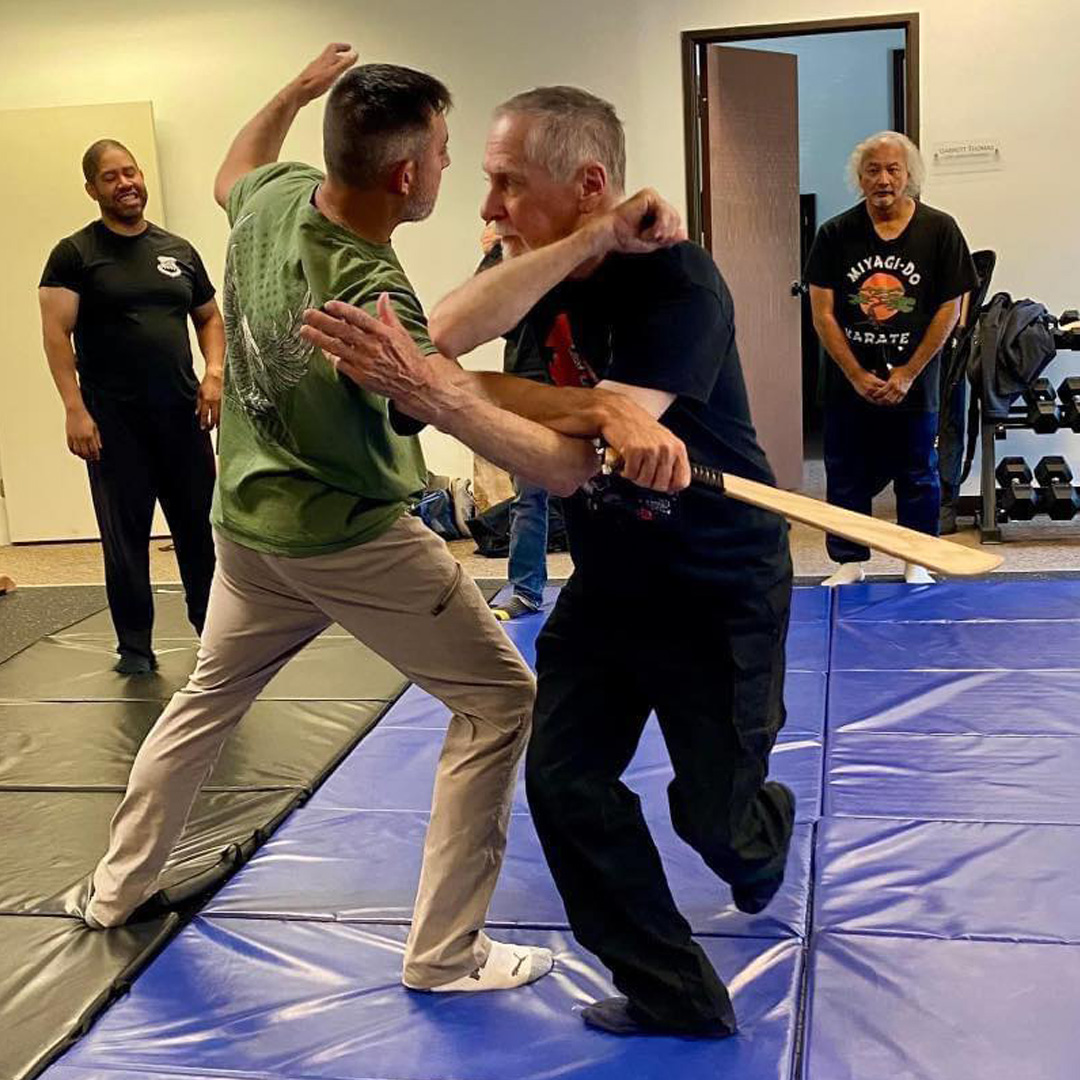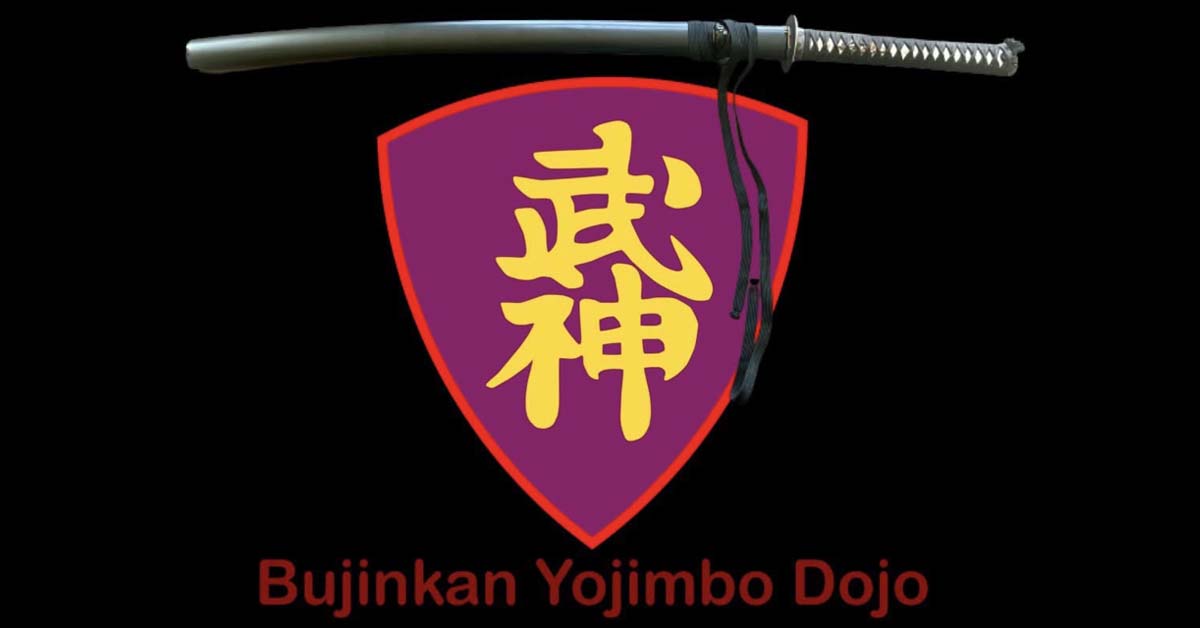The person who receives a technique in training is usually the person who initiates the attack and is then overcome; this person is referred to as Uke. The meaning of this Japanese term comes from ukeru 受ける, “to receive”, and this is of deep importance in the philosophy of our martial training. The Uke himself (or herself) has a tremendous responsibility in the process of helping others to learn.
Why is this so? To “do his job” properly, the Uke must be able to give his partner a realistic and convincing attack while remaining emotionally noncompetitive. He knows his attack is supposed to be neutralized or countered, and he must remain open and receptive to what his partner will do next. He must then give his partner enough resistance to the technique so the partner must move correctly to execute it, yet must also be able to flow along with his partner’s movement when the technique is being applied correctly to avoid being injured.

In our training, we avoid the kind of full-speed, full-power-free sparring used by competitive martial sports. The reason for this is simple: the techniques of classical martial arts are designed mainly to injure or kill the opponent, which in sporting events is frowned upon. After an initial movement, which may include striking, kicking, grabbing, stabbing, cutting, or deflection, we follow through with an appropriate sequence of techniques. What makes those follow-up techniques “appropriate” is that instead of rigidly following a prearranged movement pattern “because that’s the sequence that was handed down”, we respond to what occurs in the partner’s movement when he has actually been struck, kicked, grabbed, unbalanced, etc. The only way to do this is to move our punches, kicks, etc. through our partner’s target areas: otherwise, the timing, distancing, and other movement factors will be unrealistic because the defending partner will be responding to an attack that could never have damaged him.
At the same time, we don’t want to injure our training friends. The solution at the beginning levels of training is to use slow motion, and for the defender to match the rhythm or pace of the attacker’s movement. The result looks like a movie played in slow motion. This allows both practitioners to focus on their partner’s vital targets without injury. It also allows both partners time to feel and understand factors in positioning, balance, weight-shifting, etc., which cause the techniques to work. As time passes understanding increases, and more speed and intensity become possible with less risk. If beginning students train using a lot of speed and power without yet having learned to move correctly, they are only learning how to be fast and strong, not how to protect themselves in a fight. Most people already have good reflexes and basic speed. If they can learn to perform the techniques slowly, it will be easy to do them fast, because their bodies will adjust to the difference automatically. If they haven’t learned to move properly before bringing speed into the motion, then all they know is that they managed something effective somehow, with no understanding of how and why it worked. Success then becomes a matter of luck each time, not of skill.
The ability to properly receive what your partner does and flow along with it requires considerable sensitivity, a quality crucial to every aspect of Taijutsu. The word ukeru is also the root of the word Ukemi, used in reference to falls and rolling skills, allowing the practitioner to fall, be thrown, or knocked to the ground without injury. The more advanced your skill is, the better you become as Uke. It is also true, however, that one of the best ways to advance in skill is to work at becoming a good Uke. By receiving others’ techniques, you learn what they “should feel like” when they are being done correctly. This, in turn, teaches you more about how to do them correctly yourself.
If a practitioner allows his ego to become involved in training and becomes competitive with his partner, both parties are cheated. Each training scenario has a particular structure, and variations are expected to occur within that structure to the extent that size, weight, and personal habits differ from what was shown by the instructor and his Uke as the “base technique”. This allows realistically for creative spontaneity amid form, even at the most basic level of training. If the Uke becomes competitive with his partner and decides he will not allow his partner to execute a technique, then several suboptimal things may happen.
First, neither the Uke nor his partner is learning anything about the technique, and the training time of both is being wasted.
Second, the Uke tends to commit himself to a single course of action. Unlike in a real fight, the Uke already knows what the technique is that he is going to face when training, because the instructor has just demonstrated it. Also, the Uke’s training partner (known as Tori) usually will not be trying to apply the technique with full speed and power because if the technique involved a bone-breaking strike or a joint dislocation, a muscle-tearing technique, or destruction of a nerve center you would have to find a new Uke for each application because of the damage you caused to the body of the Uke. However, this also makes it easy for the Uke to cheat his partner by using too much resistance, changing the timing and rhythm relationship with his partner, etc. One danger in focusing all of one’s attention on preventing a technique application is that the Uke’s partner may be injured.
Another danger in over-committing one’s resources in this way is that Uke himself may be injured, because in Taijutsu we train to attack an opponent’s “unprotected places”; it is the same idea involved in slipping over an unguarded wall while the target’s bodyguards are watching the front door, or smashing the bones of an opponent’s foot while his attention and effort are focused on restraining your arms. The principle is the same: Resistance is something to bypass or “sneak around”, not something to try to overpower directly. By focusing his efforts on resisting a technique application, the Uke is also “training himself” to be vulnerable in other areas. This can be disastrous when you train with a senior student or instructor because there are always a variety of ways to escape any situation, and the junior practitioner does not know what the capabilities of the senior may be. If the Uke acts in such a way that a senior partner feels genuinely threatened, it could provoke an instinctive, unthinking life-protective reaction which might result in the Uke being seriously (perhaps permanently) injured or killed.
As the Uke, it is just as important for you to learn ways of self-protection as it is to learn to perform fighting techniques. Think for a moment about the stuntmen in some action movie fight scene. They move so well with their partner’s punches that it looks just like a real fight. What they are doing, in reality, is absorbing and redirecting, or otherwise neutralizing the opponent’s energy without being hurt themselves. This is a form of Ukemi. By also presenting the illusion that he is being injured through the way he moves, and by allowing the opponent to feel that his punches are connecting by giving just enough resistance, the Uke is also practicing Kyojitsu Tenkan Ho, the “method of interchanging truth and falsehood”. This is another core principle of Ninpo that allows the practitioner to prevail by letting the enemy think and feel that he is winning or has won, thus causing him to make himself vulnerable.
Being Uke is a great responsibility. It is also an unparalleled learning experience. By being the best partner you can be, you will teach others and yourself.

Dale Seago
Director of Intelligence





0 Comments